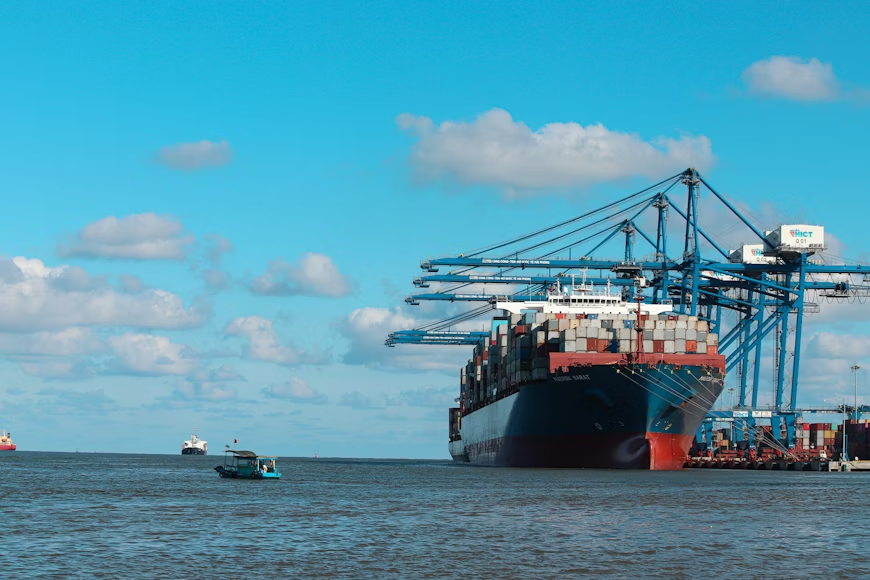In a swift negotiation process lasting only 88 days, India and the United Arab Emirates (UAE) officially inked the Comprehensive Economic Partnership Agreement (CEPA) in February 2022. This historic agreement marks India’s first comprehensive free trade agreement in a decade and highlights the significance of the trade relationship between the two nations. The UAE stands as India’s third-largest trading partner in 2021.
The CEPA holds significant implications on multiple fronts. Forecasts anticipate a substantial boost in bilateral trade, projecting an increase from $60 billion to $100 billion within the next five years, along with the creation of one million jobs in India. Furthermore, the agreement has the potential to catalyze broader economic collaboration between India and other Gulf countries, which have recently witnessed a surge in bilateral trade. As the trade pact takes shape, it is poised to enhance trade and investment between these two regions.
This comprehensive agreement covers a wide range of subjects, from facilitating free trade to fostering cooperation in the digital economy. Notably, it introduces rules of origin requirements, necessitating a 40% value addition in the exporting country for most products to qualify. Additionally, it incorporates a special safeguard mechanism designed to safeguard domestic producers.
Key Highlights of the CEPA:
- Free Trade of Goods and Services: Under the CEPA, the UAE will eliminate duties on 97% of its tariff lines, accounting for 99% of India’s exports to the UAE by value. This includes an immediate tariff elimination on 80% of these lines.
- Sectoral Benefits: India is expected to benefit significantly in labor-intensive sectors like gems, jewelry, textiles, leather, engineering goods, and footwear due to the UAE’s duty-free and preferential market access. The Indian pharmaceutical sector is also poised to gain as the UAE commits to automatic registration and market authorization for Indian pharmaceutical products approved by certain developed countries.
- Reciprocal Benefits: UAE exports to India, including prepared food, petrochemicals, copper and aluminum, and glassware, will substantially benefit from duty-free treatment.
- Trade in Services: The CEPA ensures open and non-discriminatory access for trade in services, spanning 11 sectors such as telecommunications, tourism, finance, and construction. This enhanced access benefits both Indian professionals and UAE service sector companies.
- Digital Trade Cooperation: India and the UAE aim to strengthen their cooperation in digital trade, encompassing paperless trading, digital payments, online consumer protection, and personal data protection. While provisions exist, they are mainly on a “best endeavors” basis and lack clarity regarding secure digital trade promotion.
- Government Procurement: Both nations have agreed to open government procurement opportunities to entities from the other country, marking a departure from India’s previous stance.
- Investment Promotion and Protection: While the CEPA does not include specific provisions on investment protection, it acknowledges the existing India-UAE Bilateral Investment Treaty (BIT). Both countries have committed to finalizing a new agreement to replace the current BIT.
- Safeguard Mechanism: Unlike previous agreements, the CEPA incorporates a standard bilateral safeguard mechanism aimed at protecting India’s industries, particularly Micro, Small, and Medium-sized Enterprises (MSMEs), from sudden import surges from the UAE.
- Historical Trade Shift: The CEPA reflects India’s evolving approach to international trade. While the late 2010s saw India prioritize domestic interests and industry over internationalism, recent developments indicate a renewed commitment to comprehensive trade agreements.
- Gateway to the Gulf: With approximately 3.5 million Indian nationals residing in the UAE, this trade agreement holds immense potential for Indian goods and services. Immediate results have shown increased exports to the UAE, positioning the CEPA as a valuable tool for Indian businesses.
In conclusion, India’s CEPA with the UAE signifies a pivotal moment in their economic relationship, with the potential to reshape trade dynamics and foster deeper collaboration. As both nations embrace this comprehensive agreement, it not only opens doors to increased bilateral trade but also paves the way for broader regional engagement in the Gulf.
Catch the latest in supply chain news on The Supply Chain Report. Visit ADAMftd.com for free international trade tools.
#IndiaUAECEPA #TradePartnership #EconomicGrowth #BilateralTrade #FreeTrade #IndiaExports #UAETrade #DigitalEconomy #GlobalTrade #TradeInnovation #JobCreation #GulfCollaboration #CEPAHighlights #TradeServices #IndianPharma

















